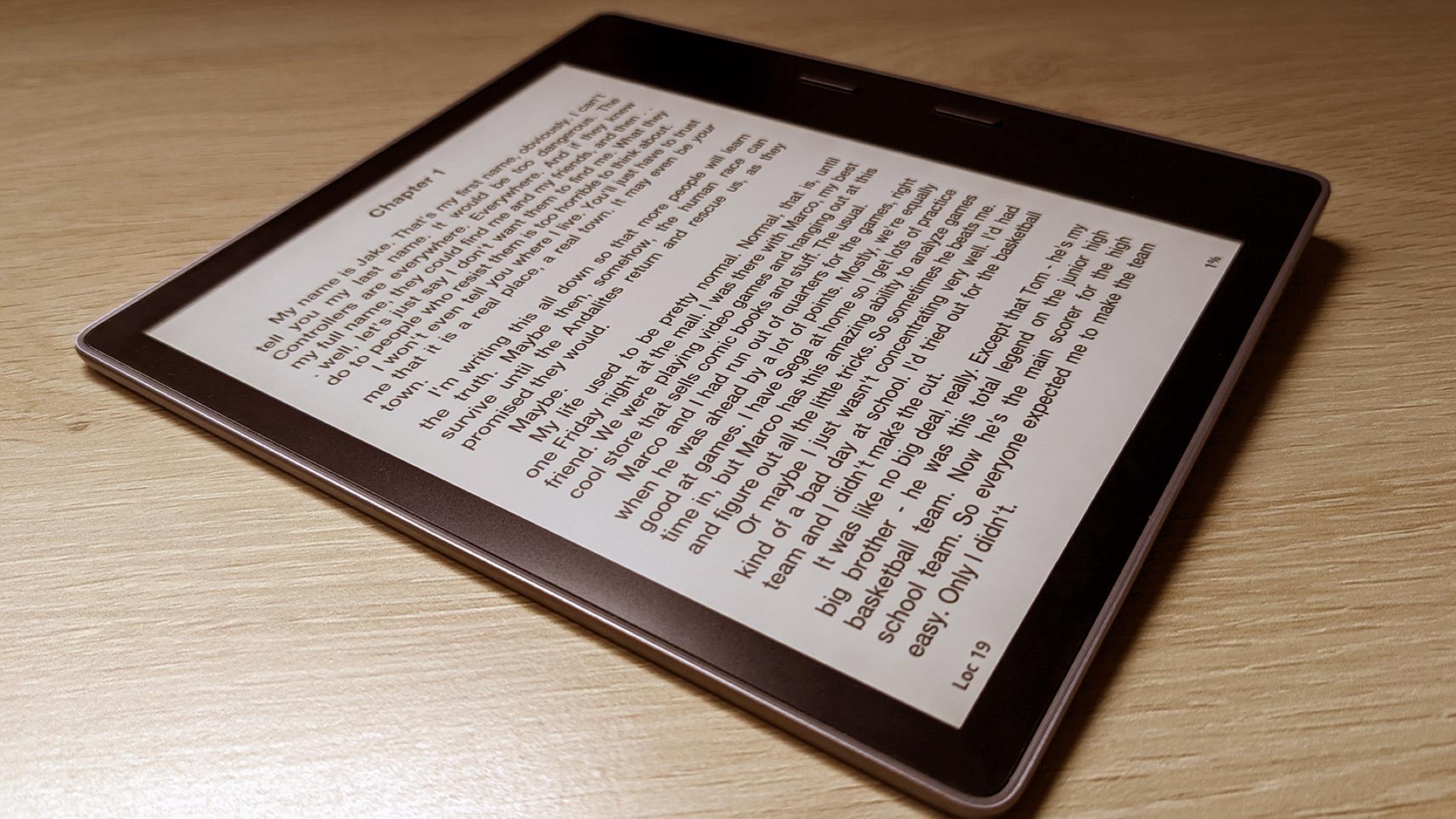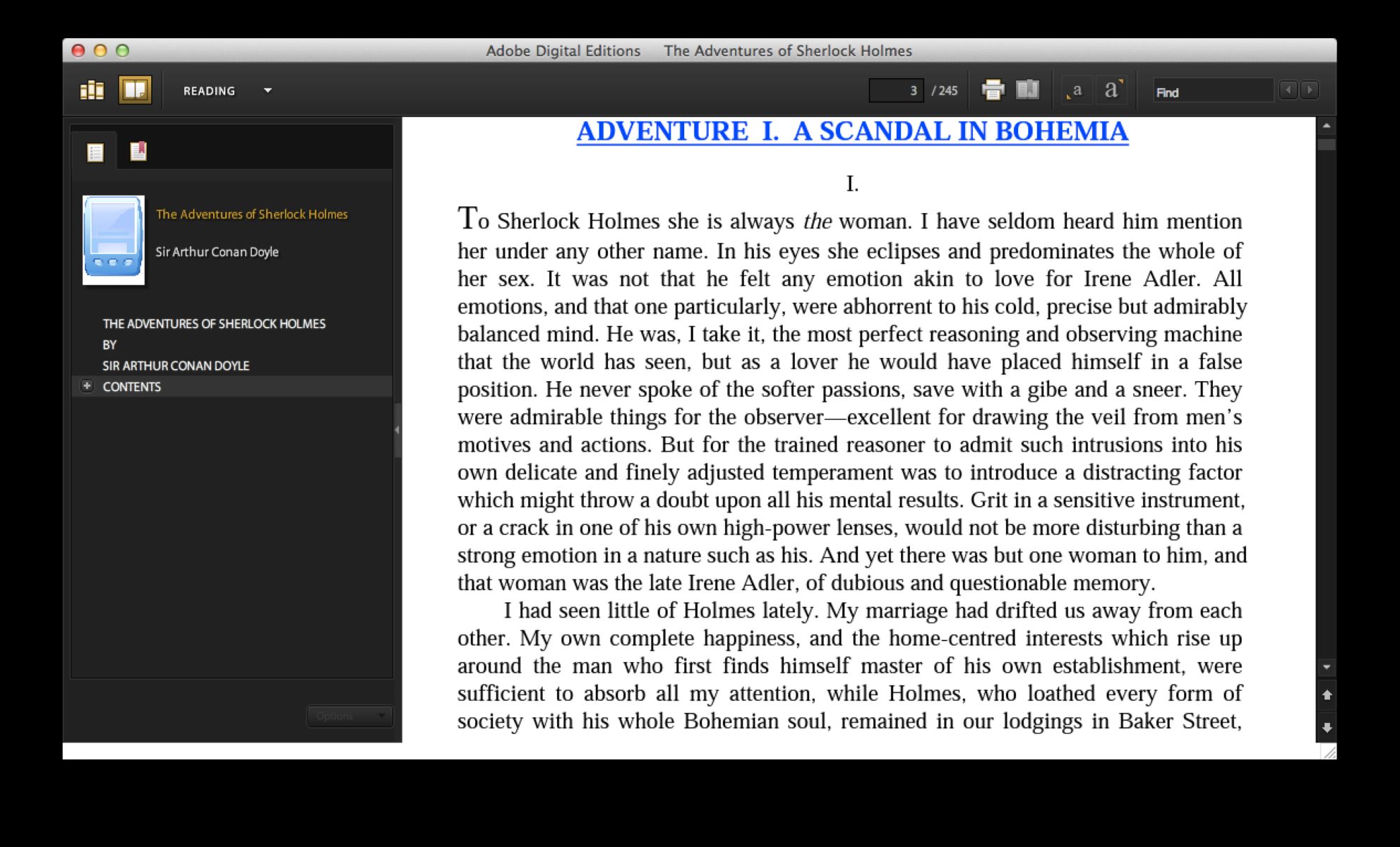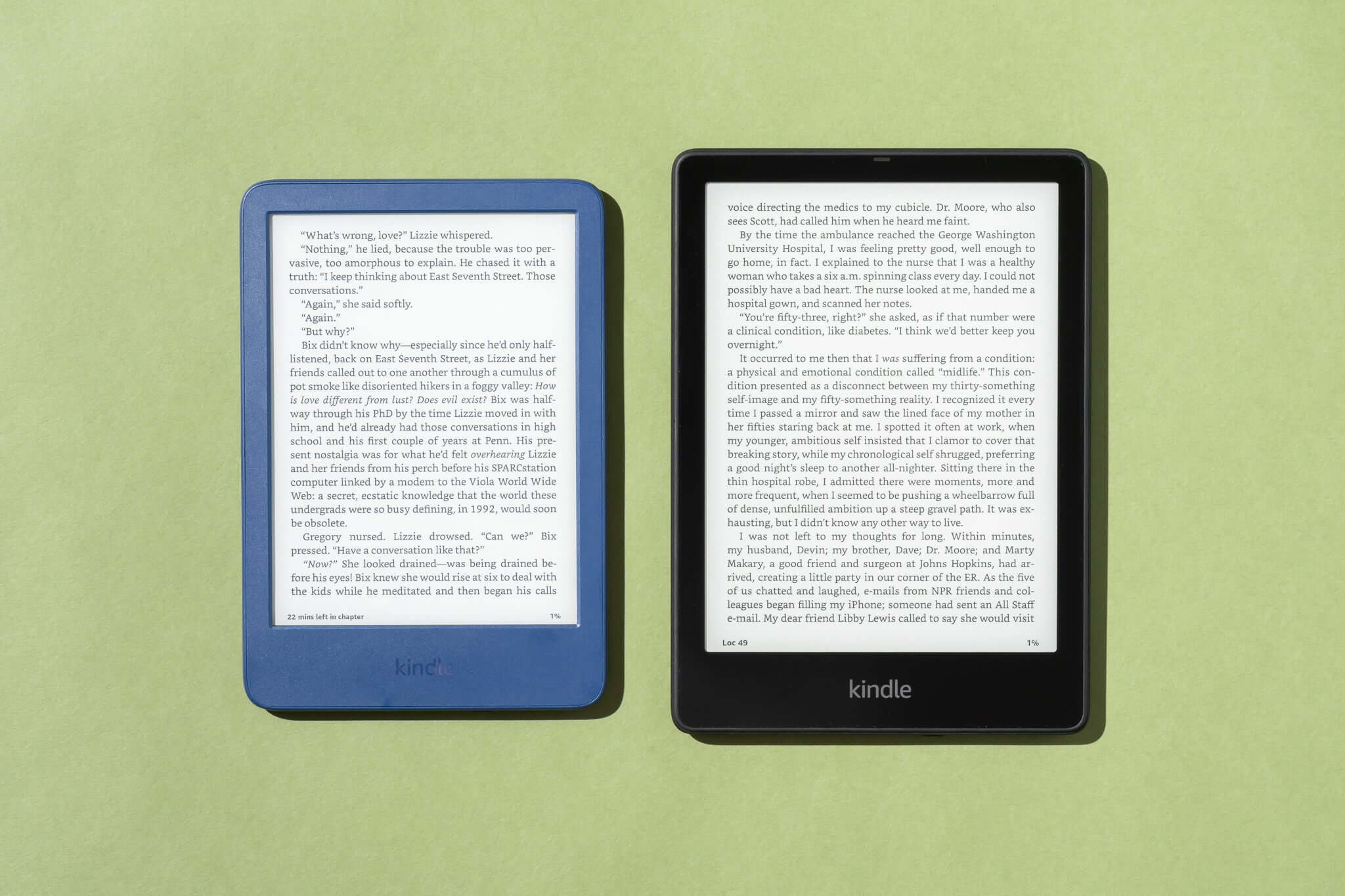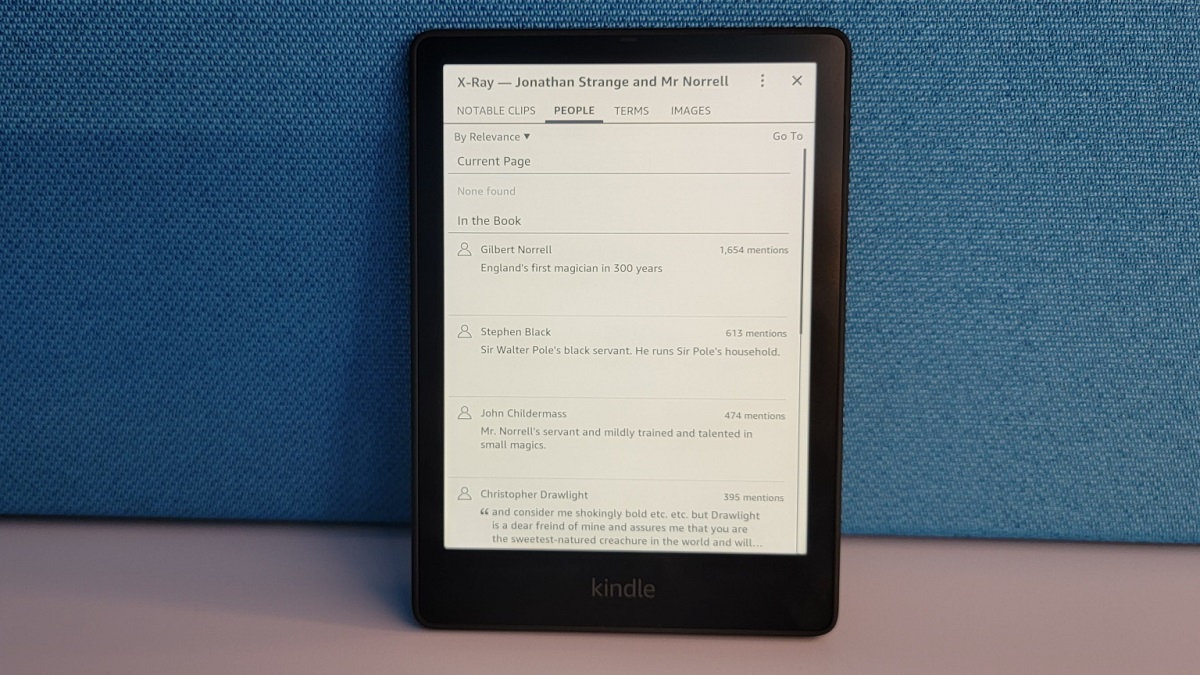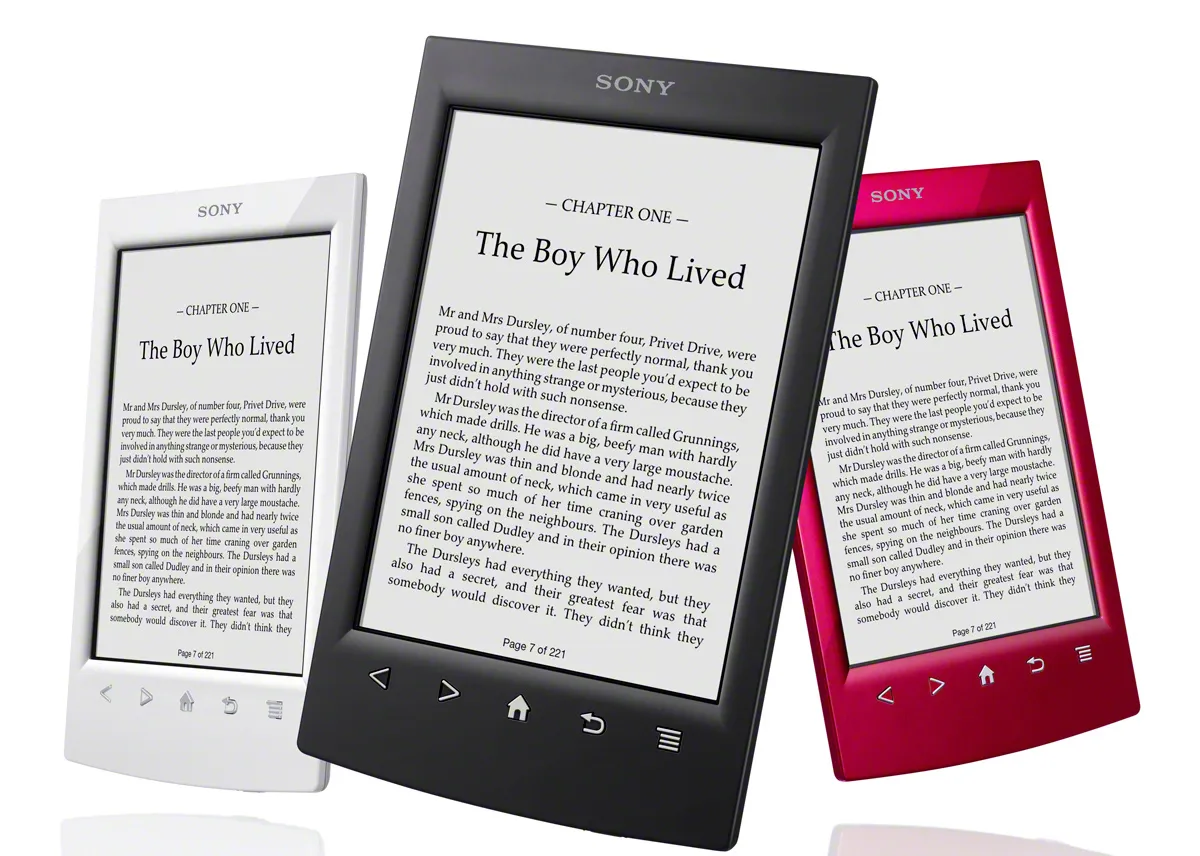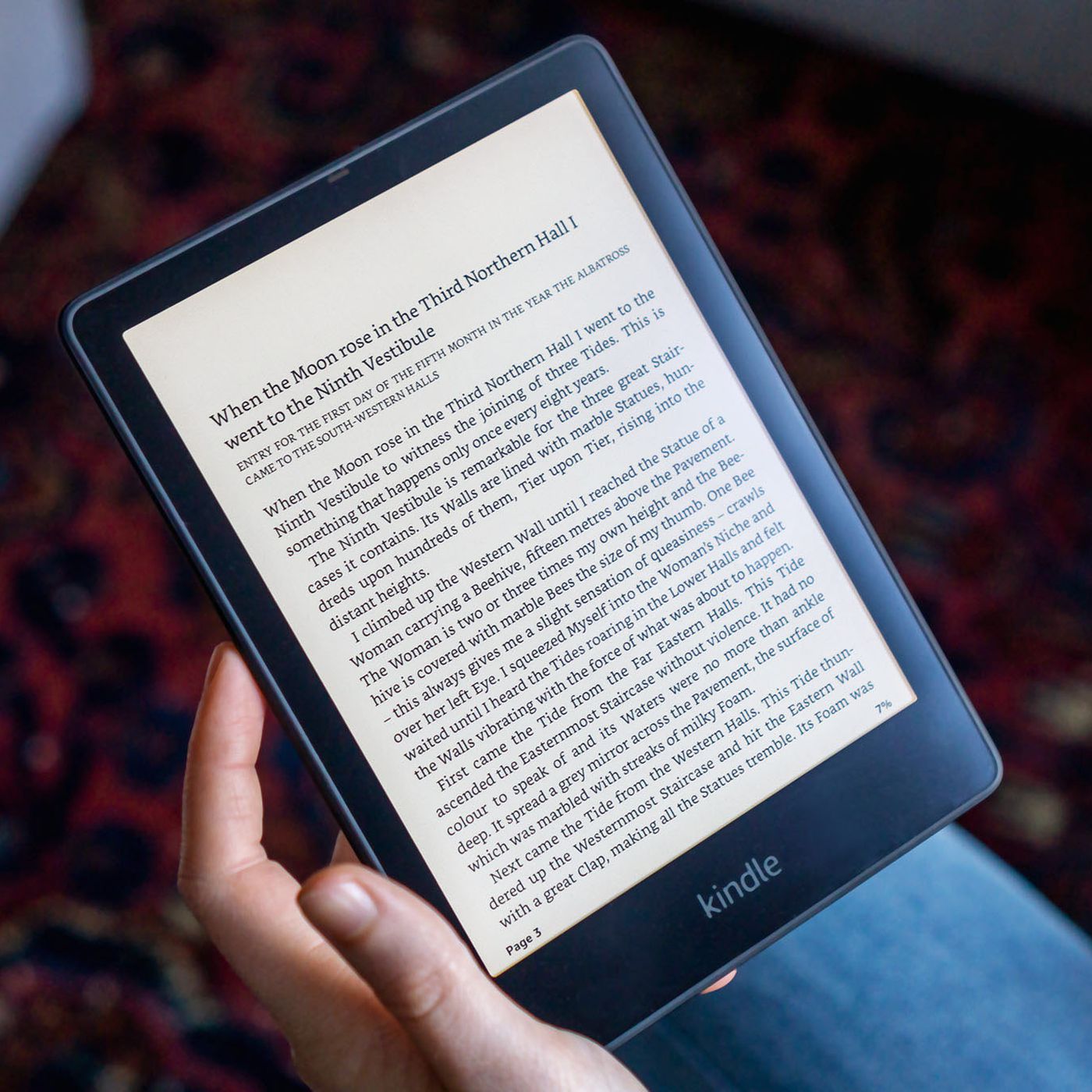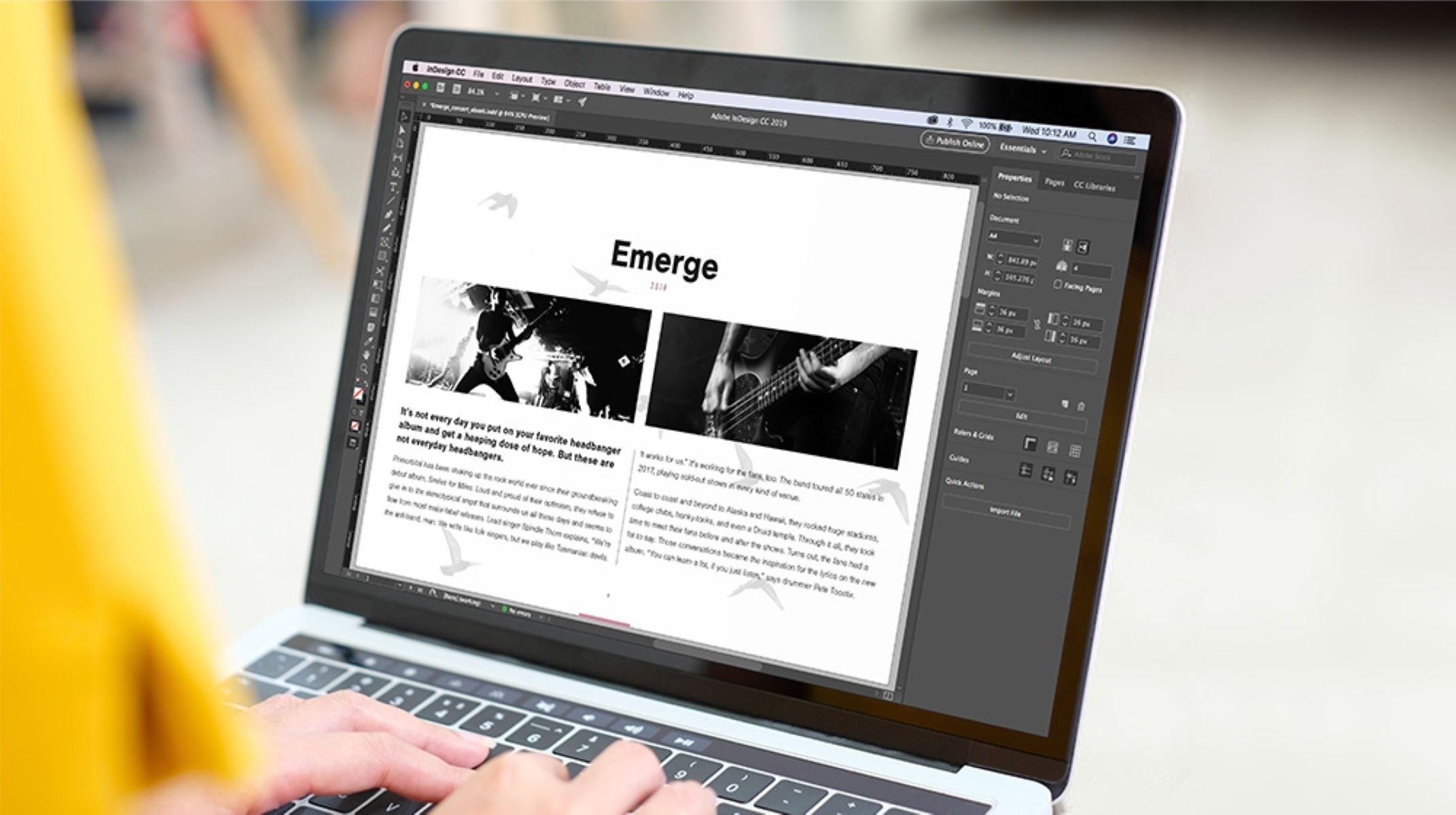Introduction
Welcome to the world of eBooks! With the advancement of technology, reading habits have undergone a major transformation. Gone are the days of carrying around bulky print books; now, we have digital books that can be accessed and enjoyed on various devices, such as smartphones, tablets, and eReaders. One popular format for eBooks is ePub, which stands for Electronic Publication.
In this article, we will explore what ePub eBooks are and why they have become a favorite among readers and publishers alike. We will also discuss how to create and read ePub eBooks, as well as the compatibility of this format with different eReaders and devices. Additionally, we will compare ePub to another commonly used eBook format, PDF, to determine which one is better suited for various needs.
Whether you are an avid reader, a writer, or a publisher, understanding the world of ePub eBooks will open up new possibilities and opportunities for you. So, let’s dive in and discover what makes ePub eBooks so special!
What is an ePub eBook?
An ePub (Electronic Publication) eBook is a digital book format designed for easy and efficient distribution and consumption of content. It is an open standard maintained by the International Digital Publishing Forum (IDPF) and is supported by a wide range of devices and software applications.
An ePub eBook is a collection of files, including HTML, CSS, and images, packaged together in a single compressed file. This format allows the text and images to adapt and flow according to different screen sizes and orientations, making it highly versatile for reading on various devices.
Unlike other eBook formats, such as PDF, which have a fixed layout, ePub eBooks have a reflowable layout. This means that the text can automatically adjust and reformat based on the user’s device and preferences. Readers can customize the font size, style, and layout, making it comfortable for them to read on any screen.
ePub eBooks offer a wide range of interactive features and multimedia enhancements. These can include embedded audio and video files, hyperlinks, annotations, and interactive quizzes. This makes the reading experience more immersive and engaging, especially for educational and interactive content.
Another key feature of ePub eBooks is their compatibility with assistive technologies. These eBooks can be easily converted into accessible formats, such as braille or text-to-speech, making them accessible to individuals with visual impairments or reading difficulties.
Overall, ePub eBooks provide a user-friendly and adaptable reading experience, allowing readers to enjoy their favorite books on different devices while maintaining the same level of comfort and accessibility.
Advantages of ePub eBooks
ePub eBooks offer numerous advantages over traditional print books and other eBook formats. Here are some key benefits to consider:
1. Responsive Layout
One of the main advantages of ePub eBooks is their reflowable layout. The content automatically adjusts to fit various screen sizes and orientations, ensuring a seamless reading experience on different devices. This flexibility allows readers to customize the font size, line spacing, and other reading settings to suit their preferences.
2. Cross-platform Compatibility
ePub eBooks are compatible with a wide range of eReaders, tablets, smartphones, and desktop applications. Whether you use an iPhone, Android device, Kindle, or computer, you can access and read ePub eBooks without any compatibility issues. This cross-platform compatibility ensures that your eBooks can be enjoyed by a larger audience.
3. Interactive Features
ePub eBooks support a variety of interactive features, adding value and engagement to the reading experience. These features can include embedded multimedia elements such as audio, video, and interactive images. Additionally, hyperlinks and interactive quizzes can enhance the educational value of eBooks, making them an ideal choice for textbooks and learning materials.
4. Accessibility
ePub eBooks can be converted into accessible formats, such as braille or text-to-speech, making them more inclusive and accessible to individuals with visual impairments or reading difficulties. This accessibility feature ensures that everyone can enjoy the content of an eBook, regardless of their abilities.
5. Efficient Distribution
Distributing ePub eBooks is cost-effective and efficient compared to print books. With just a single digital file, publishers can reach a global audience without the need for physical printing and shipping. This not only saves time and resources but also allows for easy updates and revisions to the content.
In summary, ePub eBooks provide a flexible and immersive reading experience, with cross-platform compatibility and interactive features that enhance the overall value. Furthermore, their accessibility features and efficient distribution make them a compelling choice for both publishers and readers alike.
Creating an ePub eBook
Creating an ePub eBook may seem intimidating at first, but with the right tools and knowledge, it can be a straightforward process. Here’s a step-by-step guide to help you create your own ePub eBook:
1. Prepare Your Content
Start by organizing your content and ensuring it is in the appropriate digital format. This can include text documents, images, and multimedia files. Make sure all the files are properly formatted and edited before moving on to the next step.
2. Use an ePub Creation Tool
To simplify the process, consider using an ePub creation tool or software. There are various options available, both free and paid, that provide user-friendly interfaces and templates for creating ePub eBooks. These tools enable you to import your content files, customize the layout, and add interactive features.
3. Structure the Content with HTML and CSS
ePub eBooks are created using HTML and CSS coding. Familiarize yourself with these languages or consult resources online to understand their basics. Use HTML to structure your content, including headings, paragraphs, lists, and other elements. CSS can be used to style the appearance of the eBook, including fonts, colors, and layout.
4. Optimize Images and Multimedia
If your eBook contains images or multimedia elements, make sure to optimize them for digital display. Resize images to appropriate dimensions and compress them to reduce file size without compromising quality. For multimedia files, ensure they are compatible with the ePub format and test them for smooth playback.
5. Validate and Test
Before finalizing your ePub eBook, it is crucial to validate it for compliance with the ePub standards. Use online validation tools to check for any errors in your HTML and CSS coding. Additionally, test your eBook on different devices and eReaders to ensure that it displays correctly and functions as expected.
6. Publish Your ePub eBook
Once you are satisfied with your ePub eBook, it’s time to publish and distribute it. There are various platforms and online marketplaces, such as Amazon Kindle Direct Publishing and Smashwords, where you can self-publish your eBook. Follow their guidelines for formatting and upload your ePub eBook for distribution to a global audience.
By following these steps, you can create a professional and well-structured ePub eBook ready for publication. Remember, practice and experimentation will help you master the art of creating engaging and visually appealing eBooks.
Reading an ePub eBook
Once you have an ePub eBook in your possession, reading it is a breeze. Here are some simple steps to get started and make the most out of your reading experience:
1. Choose an eReader or Device
To read an ePub eBook, you’ll need a compatible eReader or device. There are numerous options available, including dedicated eReaders like Amazon Kindle, as well as tablets, smartphones, and desktop applications. Ensure that your chosen device supports ePub format before proceeding.
2. Transfer the ePub eBook
If you are using a dedicated eReader or a device with a USB connection, you can transfer the ePub eBook directly by connecting it to your computer. Simply copy the ePub file from your computer and paste it into the appropriate folder on your eReader or device. Some devices also support wireless transfer methods like email or cloud storage.
3. Customize your Reading Settings
Most eReaders and eBook reading applications offer customization options to enhance your reading experience. These options may include adjusting font size, choosing a preferred font type, changing the page color, and adjusting brightness. Experiment with different settings to find the most comfortable setup for your preferences.
4. Navigate Through the eBook
ePub eBooks offer a variety of navigation features to help you explore the content efficiently. Use the table of contents to jump between chapters or sections. Many eReaders also provide options to bookmark pages, highlight text, or make notes, allowing you to keep track of important sections or quotes.
5. Interact with Interactive Elements
If your ePub eBook includes interactive features, make sure to take advantage of them. Click on hyperlinks to access related content or external websites. Play embedded audio or video files to enhance your understanding or enjoyment of the eBook. Interacting with these elements can make the reading experience more engaging and immersive.
6. Sync Your Progress
Some eReaders and reading apps offer syncing capabilities, allowing you to continue reading from where you left off across multiple devices. If you switch to a different device or eReader, make sure to sync your progress so you can seamlessly pick up where you left off without losing track of your reading.
By following these steps, you can fully enjoy the experience of reading an ePub eBook. Take advantage of the customization options and interactive features to create a personalized and immersive reading journey.
Compatibility with eReaders and Devices
One of the key advantages of ePub eBooks is their compatibility with a wide range of eReaders and devices. Whether you prefer dedicated eReaders, tablets, smartphones, or desktop applications, you can easily access and read ePub eBooks on your preferred device. Here’s a closer look at the compatibility of ePub format with different devices:
Dedicated eReaders
Dedicated eReaders, such as Amazon Kindle, Kobo eReader, and Barnes & Noble Nook, fully support ePub eBooks. These devices provide a seamless reading experience, with features like adjustable fonts, long battery life, and compact sizes. Simply transfer your ePub eBook to your eReader and dive into your favorite books without any compatibility issues.
Tablets and Smartphones
Tablets and smartphones are versatile devices that support a wide range of eBook formats, including ePub. Both iOS devices (such as iPads and iPhones) and Android devices have standard eBook reading apps that can handle ePub files, while also offering additional customization options. Download an eBook reader app like Apple Books or Google Play Books, and you’re ready to start reading ePub eBooks on your mobile device.
Desktop Applications
If you prefer reading on a computer or laptop, several desktop eBook reader applications support ePub format. Software like Adobe Digital Editions, Calibre, or iBooks for Mac allows you to read ePub eBooks on a larger screen, with additional functionalities like bookmarks, annotations, and syncing capabilities. These desktop applications provide a comfortable reading experience, especially for those who spend extended hours on their computers.
Online Reading
In addition to dedicated devices and applications, you can also read ePub eBooks directly from your web browser. Many online platforms, libraries, and retailers offer the option to read ePub eBooks through web-based readers. This allows you to access and read your eBooks on any device with an internet connection, without the need for downloading or transferring files.
Thanks to its widespread support, ePub format ensures that your eBooks can be enjoyed on various devices, regardless of the operating system or manufacturer. This compatibility makes it convenient to switch between devices or share eBooks with friends and family who may use different devices.
How to Convert a PDF to ePub
Converting a PDF (Portable Document Format) file to ePub format allows you to enjoy the benefits of reflowable text and flexible layout that ePub eBooks offer. Here are a few methods you can use to convert a PDF to ePub:
1. Online Conversion Tools
There are several online tools available that can convert PDF files to ePub format. These platforms typically require you to upload your PDF file, select the desired output format (ePub), and then download the converted ePub file. Some popular online conversion tools include Zamzar, OnlineConvertFree, and Convertio. Keep in mind that the conversion quality may vary depending on the tool used.
2. Dedicated Conversion Software
If you frequently need to convert PDFs to ePub files, investing in dedicated conversion software is a worthwhile option. Programs like Calibre, Adobe Acrobat Pro, and Nitro Pro offer PDF to ePub conversion features, with advanced customization options and batch conversion capabilities. These software options provide more control over the conversion process, allowing you to fine-tune the layout, fonts, and other elements of the resulting ePub file.
3. Manual Conversion
For more control over the conversion process, you can opt for manual conversion by copying and pasting the content from the PDF into a text editor or word processing software. Formatting and images may need to be manually adjusted during this process. Once you have the content saved as plain text, you can use an HTML or ePub editor to structure and format the text accordingly before saving the file as an ePub.
4. Outsourcing Conversion Services
If you have a large number of PDFs to convert or prefer professional assistance, you can consider outsourcing the conversion process to specialized services or freelancers. Numerous companies and individuals offer PDF to ePub conversion services for a fee. Ensure that you provide clear instructions and quality expectations to the service provider to obtain the desired results.
Remember to review and check the converted ePub file after the conversion process to ensure that the formatting, images, and interactive elements remain intact. Some complex PDF layouts or heavily formatted content may not convert perfectly, so it may require manual adjustments or editing.
By using one of these methods, you can easily convert your PDF files into ePub format and enjoy the benefits of a reflowable and adaptable eBook. Choose the method that suits your needs and preferences the most, and start experiencing the advantages of ePub eBooks.
ePub vs. PDF: Which one is better?
When it comes to digital documents, ePub and PDF are two popular formats used for eBooks. Each format has its strengths and weaknesses, making it important to understand their characteristics to determine which one is better suited for your specific needs. Let’s compare ePub and PDF in various aspects to help you make an informed decision:
1. Layout and Design
PDF files maintain a fixed layout, ensuring that the document looks the same regardless of the device or screen size. This makes PDFs ideal for documents with complex designs, such as textbooks or magazines, where preserving the original formatting is crucial. On the other hand, ePub files have a reflowable layout, allowing the content to adapt to the screen size and font settings of the reading device. This flexibility makes ePub suitable for novels or text-heavy documents.
2. Accessibility and Interactivity
PDFs are widely accessible and can be viewed across various devices and operating systems using Adobe Reader or other compatible software. However, interactivity in PDFs is often limited to hyperlinks and bookmarks. ePub eBooks, on the other hand, offer more interactivity options, including embedded audio, video, quizzes, and hyperlinks. Additionally, ePub files can be converted into accessible formats for users with visual impairments or reading difficulties, making them more inclusive.
3. Customization and Reading Experience
ePub eBooks provide a customizable reading experience, allowing readers to adjust font size, line spacing, and background color to suit their preferences. PDFs do not offer the same level of flexibility, as the layout and design elements are fixed. If you prefer a personalized reading experience, ePub is the better choice.
4. Compatibility and Distribution
PDF is widely supported by various devices, operating systems, and software applications, making it easy to distribute and view. ePub has a broader compatibility with dedicated eReaders, tablets, smartphones, and desktop applications, but it may require specific software or apps to be effective. When it comes to sharing and distributing content, PDFs are generally more straightforward, while ePub may require users to download specific reading apps or devices to access the content.
5. File Size and Storage
PDF files tend to have larger file sizes due to their fixed layout and embedded fonts and images. ePub files, on the other hand, are smaller in size because they use compression and do not store unnecessary design elements. This makes ePub more suitable for devices with limited storage capacity or when transferring files over limited bandwidth connections.
Ultimately, the choice between ePub and PDF depends on the specific requirements of your content and the reading experience you desire. If you prioritize preserving complex layouts and designs, PDF may be the better option. However, if you value adaptability, customization, and interactivity, ePub is the preferred choice. It’s worth considering both formats and weighing their pros and cons to select the format that best fits your needs.
Conclusion
In this article, we explored the world of ePub eBooks and their advantages over traditional books and other eBook formats. ePub eBooks offer a reflowable layout, cross-platform compatibility, and a customizable reading experience, making them a popular choice among readers and publishers.
We learned that creating an ePub eBook involves organizing and formatting content using HTML and CSS, and a variety of tools and software are available to simplify the process. Reading an ePub eBook is seamless, with options for customization and interactive features to enhance the reading experience.
ePub eBooks are compatible with a wide range of devices, including dedicated eReaders, tablets, smartphones, and desktop applications. This compatibility ensures that readers can access and enjoy their eBooks across multiple devices, regardless of the manufacturer or operating system.
Converting a PDF to ePub format is possible through various methods, such as online conversion tools, dedicated software, or manual conversion techniques. It allows readers to enjoy the benefits of reflowable text and adaptable layouts that ePub format offers.
Finally, we compared ePub and PDF formats and identified their strengths and weaknesses. While PDFs are ideal for preserving complex layouts and designs, ePub eBooks provide a more interactive and customizable reading experience.
In summary, ePub eBooks offer a user-friendly, adaptable, and immersive reading experience. Whether you’re a reader, writer, or publisher, understanding ePub format opens up a world of possibilities and opportunities in the digital publishing realm.







